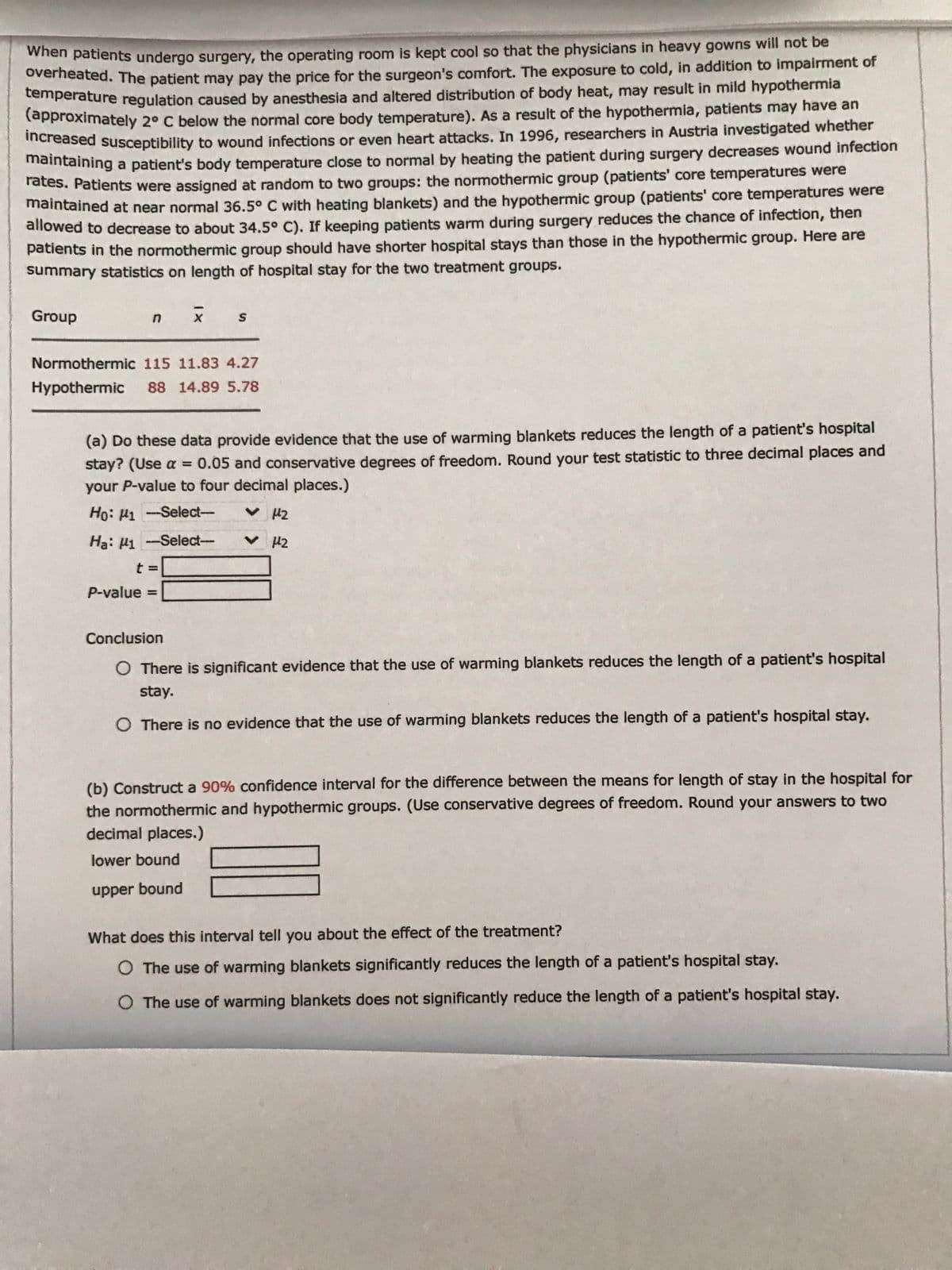when patients undergo surgery, the operating room is kept cool so that the physicians in heavy gowns will not Bê vemeated. The patient may pay the price for the surgeon's comfort. The exposure to cold, in addition to impairment of temperature regulation caused by anesthesia and altered distribution of body heat, may result in mild hypothermia (approximately 2° C below the normal core body temperature). As a result of the hypothermia, patients may have an ncreased susceptibility to wound infections or even heart attacks. In 1996, researchers in Austria investigated whether mantaining a patient's body temperature close to normal by heating the patient during surgery decreases wound infection Tates. Patients were assigned at random to two groups: the normothermic group (patients' core temperatures were maintained at near normal 36.5° C with heating blankets) and the hypothermic group (patients' core temperatures were allowed to decrease to about 34.5° C). If keeping patients warm during surgery reduces the chance of infection, then patients in the normothermic group should have shorter hospital stays than those in the hypothermic group. Here are summary statistics on length of hospital stay for the two treatment groups. Group n Normothermic 115 11.83 4.27 Hypothermic 88 14.89 5.78 (a) Do these data provide evidence that the use of warming blankets reduces the length of a patient's hospital stay? (Use a = 0.05 and conservative degrees of freedom. Round your test statistic to three decimal places and your P-value to four decimal places.) Ho: H1 -Select- v 42 Ha: H1 -Select- へ t = P-value = Conclusion O There is significant evidence that the use of warming blankets reduces the length of a patient's hospital stay. O There is no evidence that the use of warming blankets reduces the length of a patient's hospital stay. (b) Construct a 90% confidence interval for the difference between the means for length of stay in the hospital for the normothermic and hypothermic groups. (Use conservative degrees of freedom. Round your answers to two decimal places.) lower bound upper bound What does this interval tell you about the effect of the treatment? O The use of warming blankets significantly reduces the length of a patient's hospital stay. O The use of warming blankets does not significantly reduce the length of a patient's hospital stay.
Angles in Circles
Angles within a circle are feasible to create with the help of different properties of the circle such as radii, tangents, and chords. The radius is the distance from the center of the circle to the circumference of the circle. A tangent is a line made perpendicular to the radius through its endpoint placed on the circle as well as the line drawn at right angles to a tangent across the point of contact when the circle passes through the center of the circle. The chord is a line segment with its endpoints on the circle. A secant line or secant is the infinite extension of the chord.
Arcs in Circles
A circular arc is the arc of a circle formed by two distinct points. It is a section or segment of the circumference of a circle. A straight line passing through the center connecting the two distinct ends of the arc is termed a semi-circular arc.
Attached

Step by step
Solved in 4 steps


